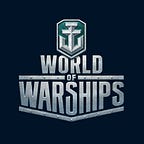Weirdships — Seaplane Tenders
Come and see the aircraft carrier’s awkward adolescent phase.
What is a seaplane tender?
Seaplane tenders are lightly-armed warships, usually reconverted from civilian vessels, that started appearing no more than a decade after the advent of the first viable aeroplane designs. This armament was purely defensive, however, as these ships were not intended to engage in active combat, but to support the operations of seaplanes. For some of these ships, this meant carrying, launching, and recovering the aircraft; for others, it was simply a matter of providing them with material support.
Advantages
- No landing surface is required: the planes can touch down anywhere in the vicinity of the ship, and subsequently be recovered with a hoist or crane.
- Without needing a flight deck, the ships can remain relatively small and inconspicuous, just needing enough space for the planes, their supplies, catapult launchers, and recovery cranes to be packed together.
Disadvantages
- The seaplanes themselves required large pontoons to enable them to float, which in turn made them suffer aerodynamically.
- These cumbersome planes were not the best suited for air combat roles by the time of the Second World War, when fighter planes with retractable landing gear were breaking speed and maneuverability records.
For the above reason, the flattop aircraft carrier would eventually come to prominence for its combat effectiveness, as the seaplane tender was relegated to supporting the fleet with aerial scouting and observation missions. After World War II, helicopters would come to take over this naval role, spelling the downfall of the seaplane tender.
Weird seaplane tenders
Ark Royal
In the years preceding the breakout of World War I, the possibility of adapting hot new aeroplane technology to assist in naval operations had admiralties across the world excitedly experimenting with different concepts.
The Ark Royal became one of the first true seaplane tenders when the Royal Navy purchased a merchant freighter, installed cranes and cleared space on deck to fit about nine planes. She provided support for the Allied landings at Gallipoli during the First World War, and would survive in her role as a seplane tender into the Second World War, when she was fitted with catapults and used for convoy escort.
Giuseppe Miraglia
Conceived originally for ferrying trains, the Regia Marina decided to acquire the ship, using its existing infrastructure to adapt it for seaplanes. While under construction, the crews would find out the hard way that the ship was more than a bit top-heavy when it capsized and flooded during a storm.
The renamed Giuseppe Miraglia would, however, be fixed up and equipped with two catapult launchers and two hangars (one fore and one aft), being able to carry about twenty planes in optimal conditions, including flying boat-bombers, adapted with foldable wings to fit on the ship.
Commandant Teste
The Commandant Teste was one of the largest seaplane carriers to be made. Like the Giuseppe Miraglia, the Teste stood quite high out of the water in order to accommodate its large hangar, and had to be especially engineered to not topple over at the first sign of rough seas.
In addition to a fairly powerful armament for the type of ship (twelve 100 mm guns and twenty AA mounts), it could be stocked with ten large foldable biplane torpedo bombers or twenty smaller fighters or reconnaissance planes. The planes were moved around the ship on rails and could be either catapulted or lowered into the water for takeoff.
Albatross
This odd-looking Australian seaplane tender was designed to concentrate its flight operations on the bow. For this reason, the forward half of the ship rises significantly higher out of the water than the aft, on account of the three aeroplane hangars it needed to house.
During World War II, the ship was assigned to British command, under which she would be used for patrolling the West African Coast. Since the Royal Navy had little use for a seaplane tender, Albatross was converted In 1944 to an engineering platform to repair and maintain landing craft during the invasion of Normandy.
Dédalo
This Spanish ship was fitted with a flat deck on the rear half for holding planes, and a specialised mooring area for blimps on the bow. During the 1920s, she would support amphibious troop landings in colonial Morocco during the Rif War.
Dédalo made history in 1934 when inventor Juan de la Cierva managed a vertical landing and subsequent takeoff with his prototype autogyro — precursor to the modern helicopter — on the rear deck of the ship.
Chitose-class
These japanese ships were the first in the Imperial Navy constructed specifically for the purpose of supporting seaplanes. As such, they were large and well equipped with four aircraft catapults and were even known to service midget submarines.
Unlike the Commandant Teste and Giuseppe Miraglia, the Chitose-class lay lower in the water but made up for the lost space with greater length. The long hulls of the two ships of this class would later facilitate their conversion to light aircraft carriers in 1944.
Salisbury Sound
One of the last purpose-built seaplane tenders, the Sally Sound was completed after the end of World War II, when the demand for these types of ships began to wane.
She was equipped with a large hangar and a rear flat deck that could carry the large P5M flying boats, which she would employ for reconnaissance during the Korean and Vietnam wars.
Originally published on the official World of Warships website.
